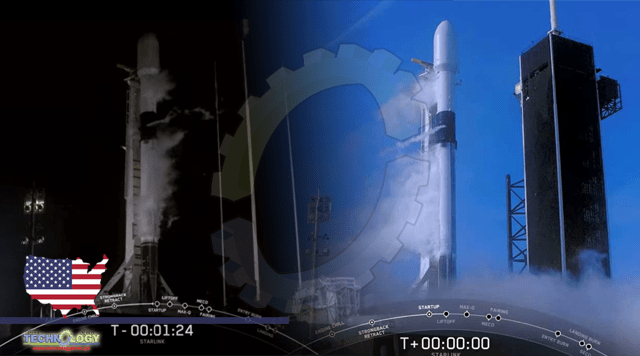The Falcon 9 rocket was less than 90 seconds away from launching 60 Starlink satellites into orbit from Pad 39A of NASA’s Kennedy Space Center in Cape Canaveral, Florida when it experienced the automatic abort, SpaceX said.

By Tariq Malik
A veteran SpaceX rocket suffered a launch abort just minutes before liftoff Sunday night (Feb. 28) while attempting to launch a new fleet of the company’s Starlink internet satellites.
The Falcon 9 rocket was less than 90 seconds away from launching 60 Starlink satellites into orbit from Pad 39A of NASA’s Kennedy Space Center in Cape Canaveral, Florida when it experienced the automatic abort, SpaceX said.
“Overall, the vehicle and payload are healthy and remain in good health,” SpaceX production supervisor Andy Tran said during live launch commentary. “The next launch opportunity is tomorrow, March 1, at 8:15 Eastern time.”
Sunday night’s launch abort is the latest delay for this particular Starlink mission. It was originally scheduled to fly earlier in February, but was delayed due to hardware issues and poor weather.
The mission, called Starlink 17, will now be SpaceX’s 20th Starlink mission and the company’s sixth launch of 2021. SpaceX currently has more than 1,000 Starlink satellites in orbit as it builds a megaconstellation capable of providing global high-speed internet coverage, particularly to remote or underserved locales.
The Falcon 9 rocket for Starlink 17 includes a first stage booster that has flown seven times so far. It launched the Iridium-8 and Telstar 18 Vantage satellite missions, as well as five separate Starlink flights.
The booster is poised to be the third Falcon 9 booster to fly eight times and, if all goes well, will land on the drone ship “Of Course I Still Love You” in the Atlantic Ocean so it can be recovered. SpaceX’s current Block 5 Falcon 9 rockets are designed to fly up to 10 times as part of the company’s reusability program to lower launch costs.
In addition to the booster, the Starlink 17 mission also includes reused payload fairings (its clamshell-like nosecone). One half is making its fourth flight while the other is on its third. Two SpaceX recovery ships, the GO Searcher and GO Navigator, are stationed off shore to recovery the fairings for later reuse as well.
According to the U.S. Space Force’s 45th Weather Squadron, there is a 70% chance of good weather for a SpaceX launch on Monday night.
Originally published at Space.com